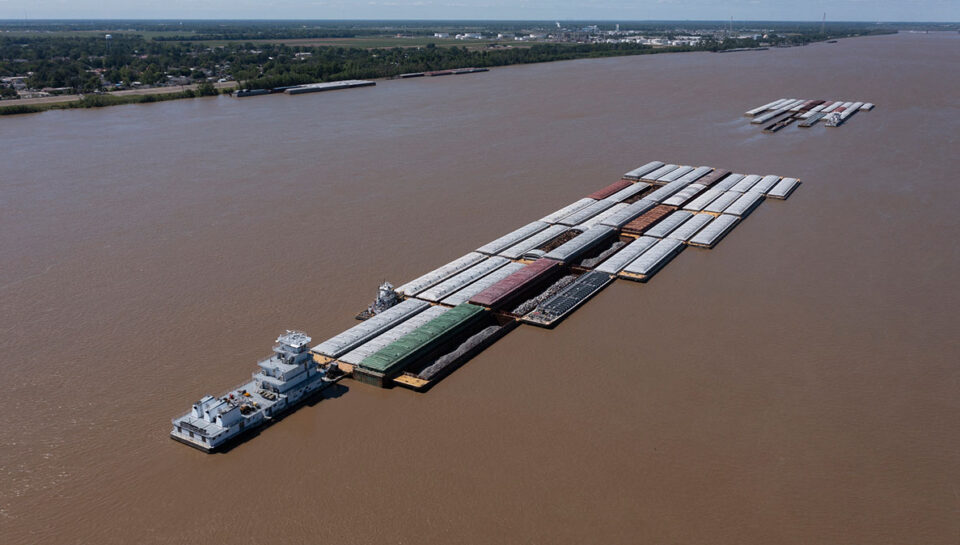Introduction
A leading lithium producer engaged our firm to develop a comprehensive supply chain optimization strategy for importing spodumene ore concentrate to their new lithium hydroxide production facility in Tennessee. The facility, scheduled to be operational by 2026, would require approximately 195,000 metric tons of spodumene concentrate annually from two primary sources: Africa and Canada. With the facility being landlocked and solely served by a single Class I railroad, the client needed a supply chain partner with deep expertise in multi-modal transportation and bulk material handling to evaluate all potential routing options and identify the most cost-effective, reliable solution. Our logistics consulting team examined over 20 potential multi-modal, origin-destination combinations to determine the optimal supply chain configuration.At A Glance
Our team delivered a comprehensive supply chain optimization strategy that identified $8.4M in annual savings through modal optimization and strategic terminal selection while ensuring reliable delivery of critical raw materials for the client’s battery-grade lithium hydroxide production.
Requirements:
- Evaluate all possible transportation modes and routes for importing spodumene concentrate from Africa and Canada
- Identify prospective terminal and transportation partners to establish reliable supply channels
- Develop detailed cost and transit time analysis to support strategic decision-making
The Challenge
The client faced significant supply chain complexity with their new lithium hydroxide production facility. The plant would process spodumene concentrate sourced from two distant locations – Africa and Canada – with each origin requiring its optimal routing solution. Being in a landlocked location solely served by one Class I railroad created limited transportation options and potential vulnerabilities.
The client needed to determine whether rail, barge, vessel, truck or some combination would provide the optimal balance of cost and reliability. Any supply chain disruption could severely impact production capabilities at the new facility. Adding to the complexity, spodumene concentrate is classified as a Group A cargo under the International Maritime Solid Bulk Cargoes Code with liquefaction risk, requiring specialized handling and storage considerations.
Africa’s rainy season also posed a particular challenge, with some months experiencing precipitation over 75% of days, which would prevent loading and could result in substantial demurrage costs. The client required a supply chain strategy to address these seasonal challenges while maintaining continuous material flow.
PraxiChain Solution
Our team of supply chain experts team deployed a comprehensive assessment approach:
- Conducted a systematic evaluation of over 20 multi-modal route combinations, including nine ocean ports/terminals, two river terminals, one railroad transload, six barge operators, two vessel-to-barge stevedores, and three railroads
- Performed detailed cost analysis comparing each route option’s total transportation costs, including vessel, terminal, rail, barge, and truck components
- Assessed terminal capabilities, storage capacity, and material handling systems at each potential location
- Analyzed weather patterns, transit times, and operational constraints to identify potential supply chain vulnerabilities
- Developed detailed requirements for rail fleet sizing and management based on transit variability and loading/unloading constraints
Results
The analysis identified that rail delivery of imported spodumene via an optimal import terminal provided the lowest total cost-to-serve solution. For material originating in Africa, shipping via the Port of Savannah with direct rail service to the U.S. facility was the most economical option at approximately $53/MT, representing potential annual savings of roughly $8.4 million compared to higher-cost alternatives.
For Canadian material, the analysis revealed that while direct rail service should theoretically be the lowest cost option, current market conditions made an intermodal approach via vessel from Trois-Rivieres to Savannah and then rail more economical at $85.54/MT, with opportunities to negotiate more favorable direct rail rates in the future.
The final work product provided the client with clear recommendations for terminal partners, including detailed assessments of individual terminals and specific guidance on fleet requirements, transit time expectations, and storage needs. The recommended approach optimized for cost, addressed seasonal constraints in Africa and provided contingency options to maintain supply continuity.
The client now has a detailed roadmap for implementing a resilient, optimized supply chain for their new lithium production facility. Projected total annual freight costs are $8.4-$13.7 million, depending on the sourcing mix—significantly lower than the highest-cost alternatives, which could have exceeded $19.8 million annually.






